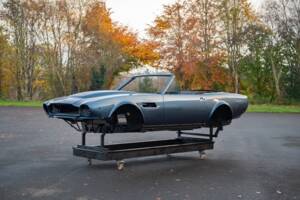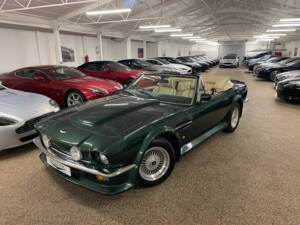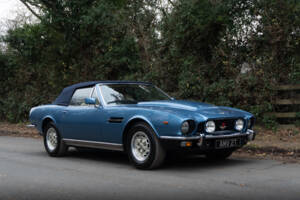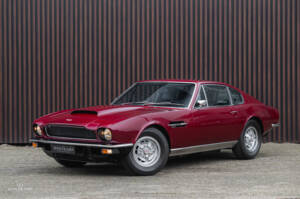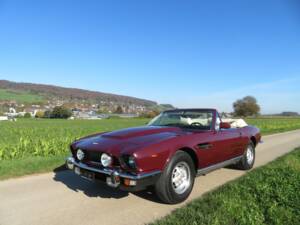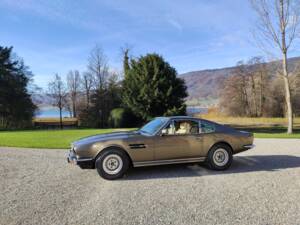- Car
- Aston Martin
- Aston Martin V8 (41 offers)
Aston Martin V8 classic cars for sale
The Aston Martin V8 stands as the quintessential hand-built British grand tourer, produced from 1969 to 1989 in very limited numbers. Known for its muscular design by William Towns, a powerful 5.3-litre V8, and an interior focused on grand luxury, it remains the reference for exclusive craftsmanship and engineering from Newport Pagnell.
Search results
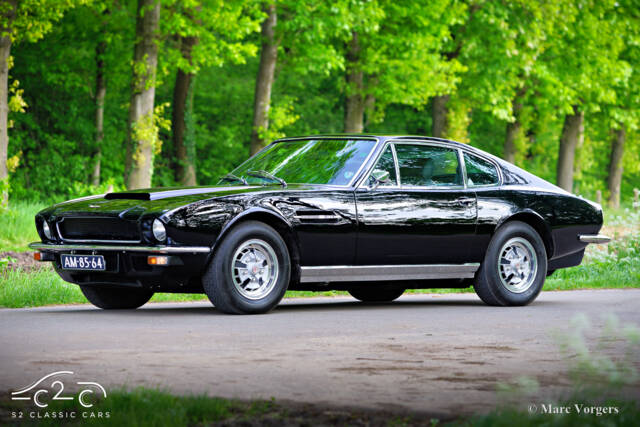
1972 | Aston Martin V8
Colour black combined with a black leather interior trimmed with black wool carpet

1999 | Aston Martin Vantage Le Mans
Aston Martin Vantage Le Mans V600 | 1999 | Route 66 Auctions - For sale by auction. Estimate 357500 EUR

1987 | Aston Martin V8 Volante
Upgraded to Prince of Wales specification
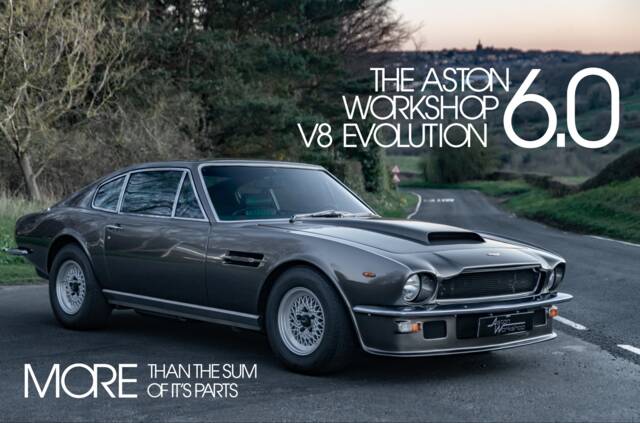
1977 | Aston Martin V8 Vantage
The Aston Workshop Evolution 6.0
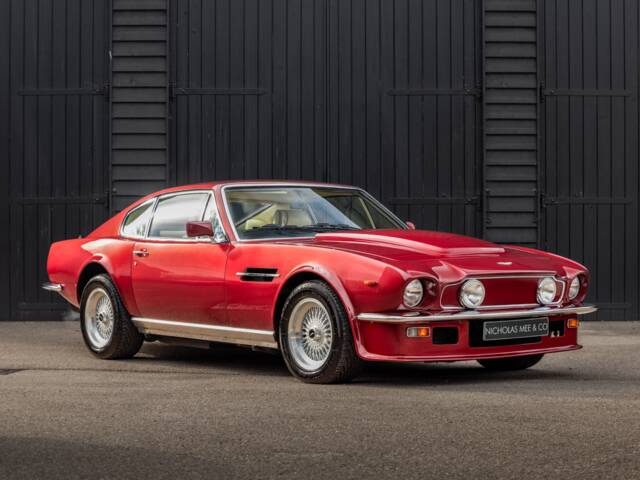
1985 | Aston Martin V8 Vantage
1985 Aston Martin V8 Vantage

1989 | Aston Martin V8 Vantage Volante X-Pack
1 of 79 Examples Manual ‘X Pack’

1978 | Aston Martin V8 Volante
1978 Aston Martin V8 Volante - 45000 miles
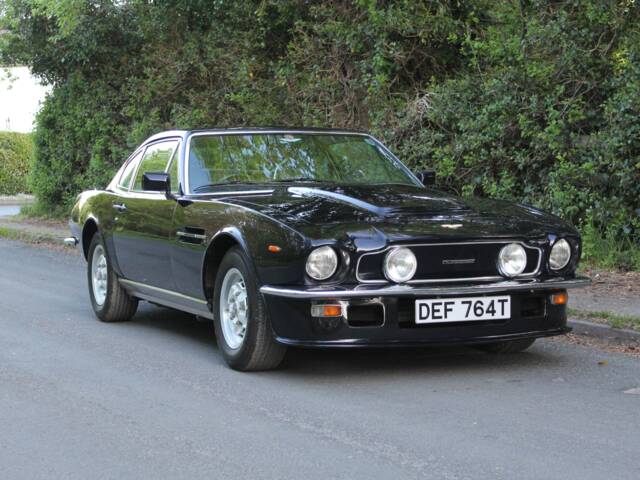
1978 | Aston Martin V8 Vantage
1978 Aston Martin V8 Vantage
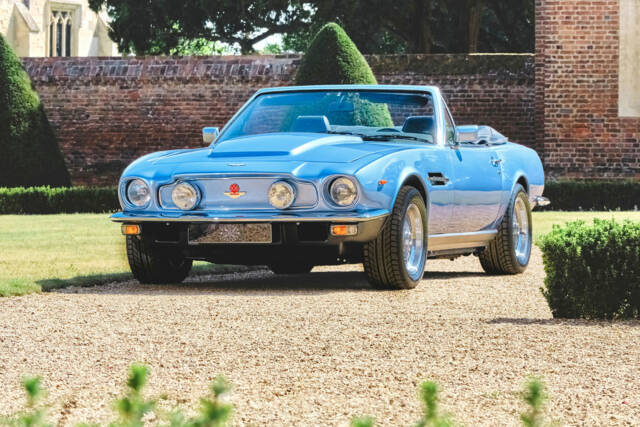
1986 | Aston Martin V8 Volante
Factory LHD ZF Manual Model
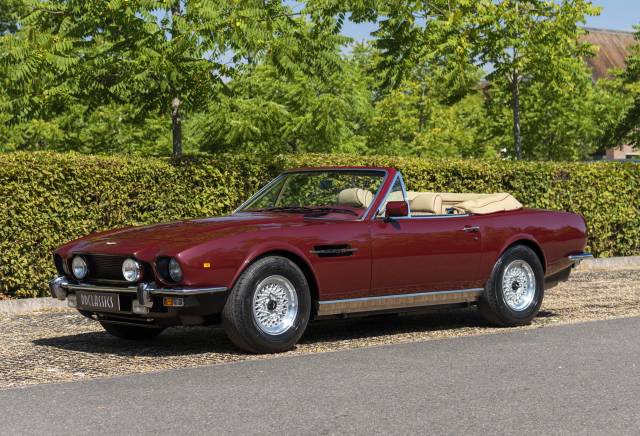
1987 | Aston Martin V8 EFi Volante
Aston Martin V8 Volante Series 2 (LHD)
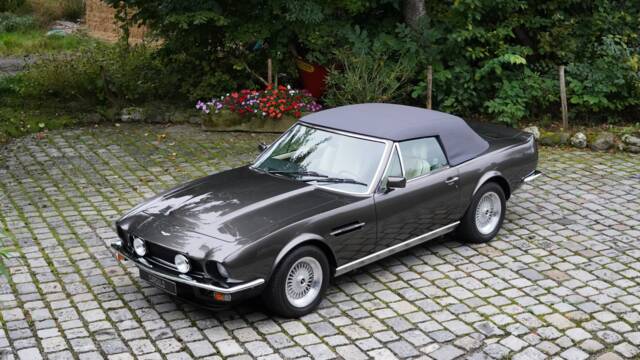
1980 | Aston Martin V8 Vantage Volante
only 6,762 km/ Well-documented history

1976 | Aston Martin V8
The nicest Aston Martin V8 we have ever seen

1980 | Aston Martin V8 Volante
Geneva Show Car 1980! MFK 10.2024 Veteran!
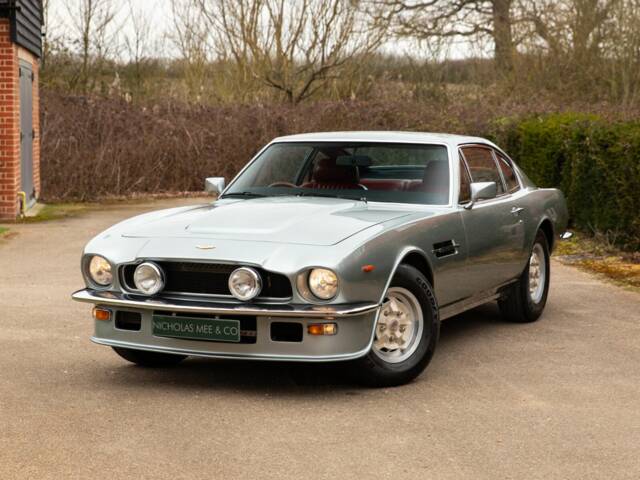
1978 | Aston Martin V8
Aston Martin V8 (Rare 5-speed Manual)

1988 | Aston Martin V8 EFi
Aston Martin V8 EFI Manual
History of the Aston Martin V8
Aston Martin introduced the V8 as a successor to the six-cylinder DBS, launching the DBS V8 in 1969 once Tadek Marek’s 5.3-litre V8 engine was ready. In 1972, the model finally dropped the ‘DBS’ name, becoming simply the Aston Martin V8, setting itself apart with a distinctive front end and continuing the brand’s tradition of small-batch, entirely hand-built GTs. This generation remained Aston’s flagship, manufactured in a series of five evolving versions over two decades. All models were meticulously constructed in Newport Pagnell, with each car requiring around 1,200 hours to complete. The V8 Volante, a convertible variant, appeared in 1978 following a long hiatus of open-top Astons. In 1989, the V8 series passed the baton to the Virage, marking the end of an era for traditional, hand-crafted British grand touring cars.
Model History
The model lineage begins with the V8’s predecessor, the DBS, which initially sported a straight-six and then the new V8 engine. When the V8 fully took over in 1972, five series were produced. Series 1 started as a rebranded DBS V8, mostly differentiated by styling and badging. The third series, produced from 1973 to 1978, was the most numerous, with technical updates including a redesigned bonnet scoop and changes to meet US emissions rules. The fourth and Oscar India series received a heavily revised interior with rich wood veneers and more advanced features. Finally, the fifth series, spanning 1985 to 1989, introduced modern electronic fuel injection, improving reliability and emissions. In 1989, the Virage was launched as the direct successor to the V8.
Highlights of the Aston Martin V8
The V8 embodies classic British GT values: imposing stature, distinguished by a long bonnet and accentuated grille, muscular yet refined lines, and an opulent cabin finished with thick leather, rich wood, and deep carpeting. The hand-assembled 5.3-litre V8 engine, available with both carburettors and, later, electronic fuel injection, produced outputs from 310 to well over 400 hp, particularly in Vantage specification. Convertible Volante models and low-volume special editions add even greater exclusivity. Notably, the model’s mechanical layout—steel chassis, aluminium body, rear-wheel drive, manual or automatic transmission—underscores its unique character in the GT segment.
Technical Data
Special Editions and Collectible Models
Several variants extend the exclusivity of the V8 series: the ‘Oscar India’ (October Introduction) models introduced a new interior design and the signature bonnet bulge. The V8 Vantage X-Pack, the final and most powerful Vantage, came with up to 432 hp and the rare ZF manual. The lightweight Zagato, with aluminium bodywork and up to 432 hp, is famously rare with just 50 coupés built. The Vantage Le Mans, marking the company’s endurance racing legacy, saw only 40 examples made, delivering up to 600 hp. The V8 Volante Prince of Wales series—just 20 cars built to royal specification—stands at the pinnacle of convertible collectability.
Weak Spots and Common Issues
Handbuilt exclusivity brings specialist maintenance needs. The V8’s all-alloy block and heads are robust, but regular attention to valve clearances and timing chains is crucial. Early Weber carburettors need precise tuning and suffer from hot starting issues if neglected. Later cars with fuel injection are less temperamental but require expert diagnostics. Rust can affect steel chassis, especially at mounting points, so underbody checks are essential. Automatic transmissions (mainly Chrysler units) are generally reliable, provided fluid changes aren’t skipped. Interior wood veneers can delaminate, while leather may suffer if neglected. Spares are available for most running gear, but original trim and panels are scarce and costly.
Engine and Performance, Transmission and Handling
The hallmark of the Aston Martin V8 is effortless grand touring combined with raw power. Early V8s deliver 310–320 hp, while Vantage versions push outputs far higher, making them some of the fastest GTs of the period. Most cars came with automatic transmission, but sportier variants offered a five-speed manual—mandatory on high-torque models like the V8 Vantage. The chassis is set up for both comfort and sharp response, with Koni suspension and AP-Racing brakes available as factory fit, plus limited-slip differential as standard on many versions. The Vantage Zagato and X-Pack models are especially known for their firm set-up and uncompromising dynamics, appealing to enthusiasts seeking more direct feedback. The convertible Volante models maintain most of this dynamic character despite their extra weight. - V8 Vantage (up to 432 hp, 0–100 in 5.3 secs)
- V8 Volante (open-top luxury, 400 hp in later series)
- Vantage Zagato (297 km/h, lightened body, X-Pack motor)
- Vantage Le Mans (550–600 hp, ultimate performance, only 40 made)
Interior, Comfort, Exterior and Design
William Towns’ design imposes real presence: the long bonnet and deeply set grille set the tone, with flared wheel arches and strong body lines. Interiors are opulent—hand-stitched hides, thick pile carpets, and liberal use of walnut and rosewood, especially in Oscar India models. Optional features often included air conditioning, electric windows, sunroof, and Recaro seats in special builds or Vantage versions. Volante models offered rare factory full-leather dashboards. Factory finishes ranged from classic British Racing Green to customer-specified special metallics and two-tones. Original Ronal or GKN alloys, chrome bumpers, and quad headlamps defined the period aesthetic. Rarity and originality—like matching numbers cars or unique colour schemes—drive much of the appeal for collectors.
Other Features
Almost every Aston Martin V8 comes with an extensive documentation package: Heritage Trust Certificate, service books, and original tools are commonly present. Bespoke factory options and rare dealer-installed accessories (e.g., unique sound systems, special order paint, etc.) occasionally surface. The V8’s pop culture impact runs deep: most famously, Timothy Dalton’s Bond car in 'The Living Daylights' was an Aston Martin V8, a detail often noted by enthusiasts. Many cars remain in collector hands, with originality and documented history particularly valued given the low production numbers.
Summary
The Aston Martin V8 series commands its reputation through low production, British hand-built craft, robust and evolving eight-cylinder performance, and a distinctly muscular design language. With a huge variety of exclusive and special factory variants, coupled with proven provenance and enthusiastic demand (making up over 90% of classic Aston Martin activity on the market), the Aston Martin V8 stands as a pillar of old-school grand touring and mechanical engineering from Newport Pagnell.


